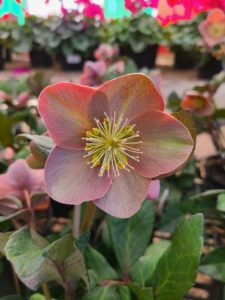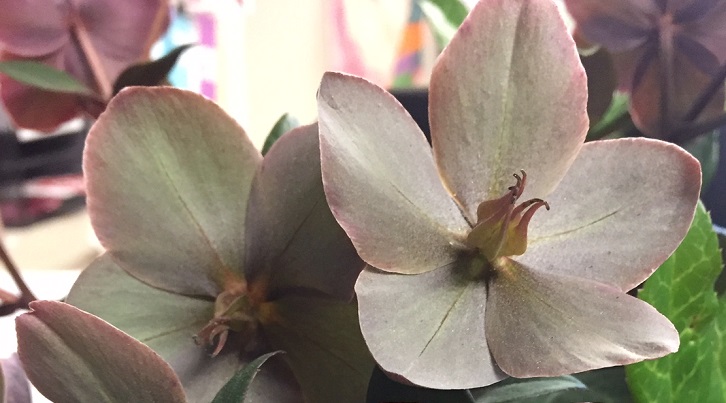
Lenten Roses, also known as Hellebores, are semi-evergreen perennials native to temperate zones in Europe and Western China. The name Hellebore symbolizes serenity, tranquility and peace. Fortunately for us, Hellebores tolerate a wide range of soils in Central Texas and provide winter blooms in the shade with relatively little care.
Plant Hellebores in soil that has been amended with organic matter in dappled shade. Leaves will scorch in the summer sun. Planting under a deciduous tree is ideal, as sun is needed in the winter to encourage blooms. Hellebores seem to subscribe to the adage “the first year they sleep, the second year they creep and the third year they leap!” Plant them where they will thrive and be patient for them to establish. The rewards are worth it!
Well-drained soil is essential, so if you have clay soil or low spots in your garden, consider keeping them in pots.
Hellebores do best in alkaline soil. Most Central Texas soils are fairly alkaline but lacking in organic matter, which is why additions of compost to the planting bed prior to planting is recommended. Fertilize with an organic fertilizer in the fall, such as MicroLife 6-2-4, or Happy Frog Organic Fertilizer for Fruit and Flowering Plants.
Top dress with an organic compost in the fall, taking care to avoid placing it next to the stems or on the crown of the plant to prevent rot. Never plant them too deeply, and always pull mulch back from the crowns.
Remove “spent” leaves in the spring as the new growth is emerging. Although the plants will spread slowly by rhizomes, division is not necessary to maintain the health of the plant. If division is desired, lift the plants in the fall and divide carefully. Plants that are divided may not flower for two years.
Hellebores are actually quite deer resistant and somewhat drought resistant once established. They pair well with other shade-loving plants such as Holly ferns or Autumn ferns, Hosta, Chinese ground orchids and Coral Bells. I like to plant my Hellebores under Rose of Sharon trees for the “best of both worlds”.
There are many different varieties available which vary in height and bloom time from late fall to early spring. The older varieties had blooms that “nodded” below the foliage, but new introductions have blooms that rise above the foliage for more dramatic color. Their winter blooms provide food for pollinators when little else is blooming.
